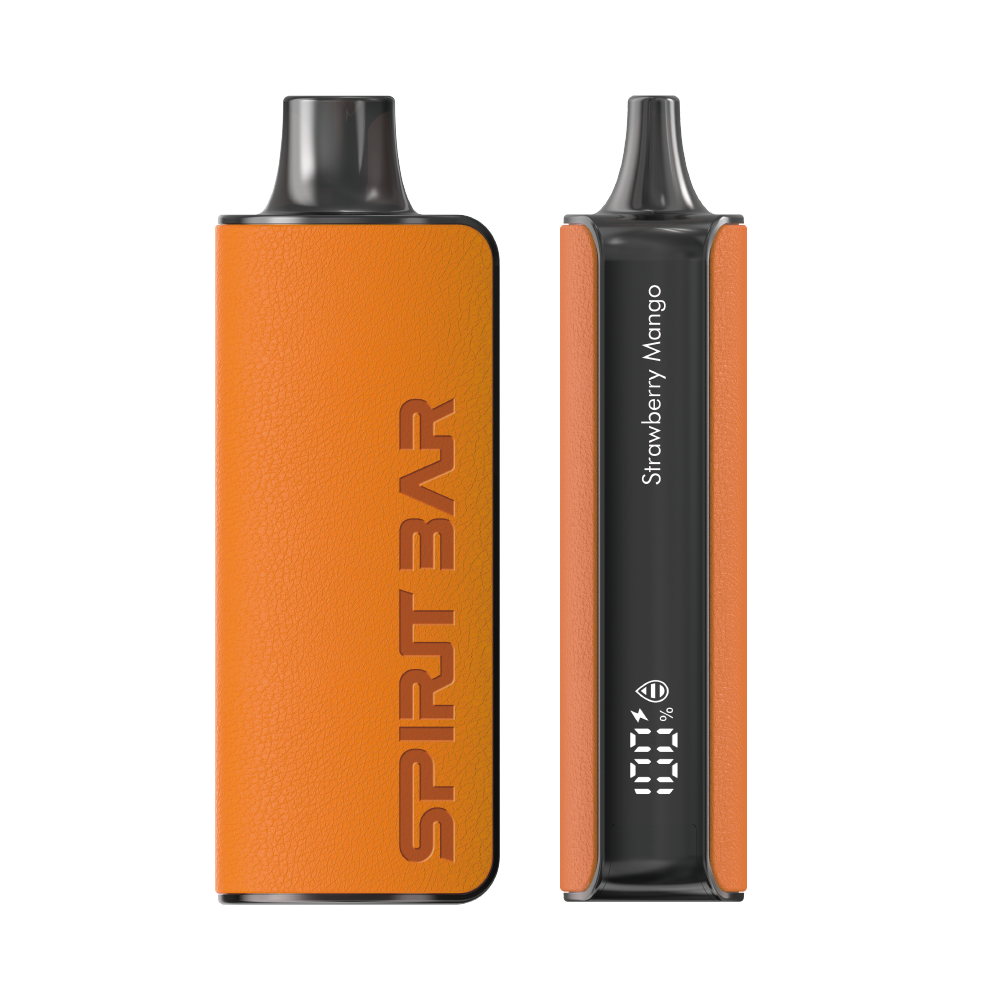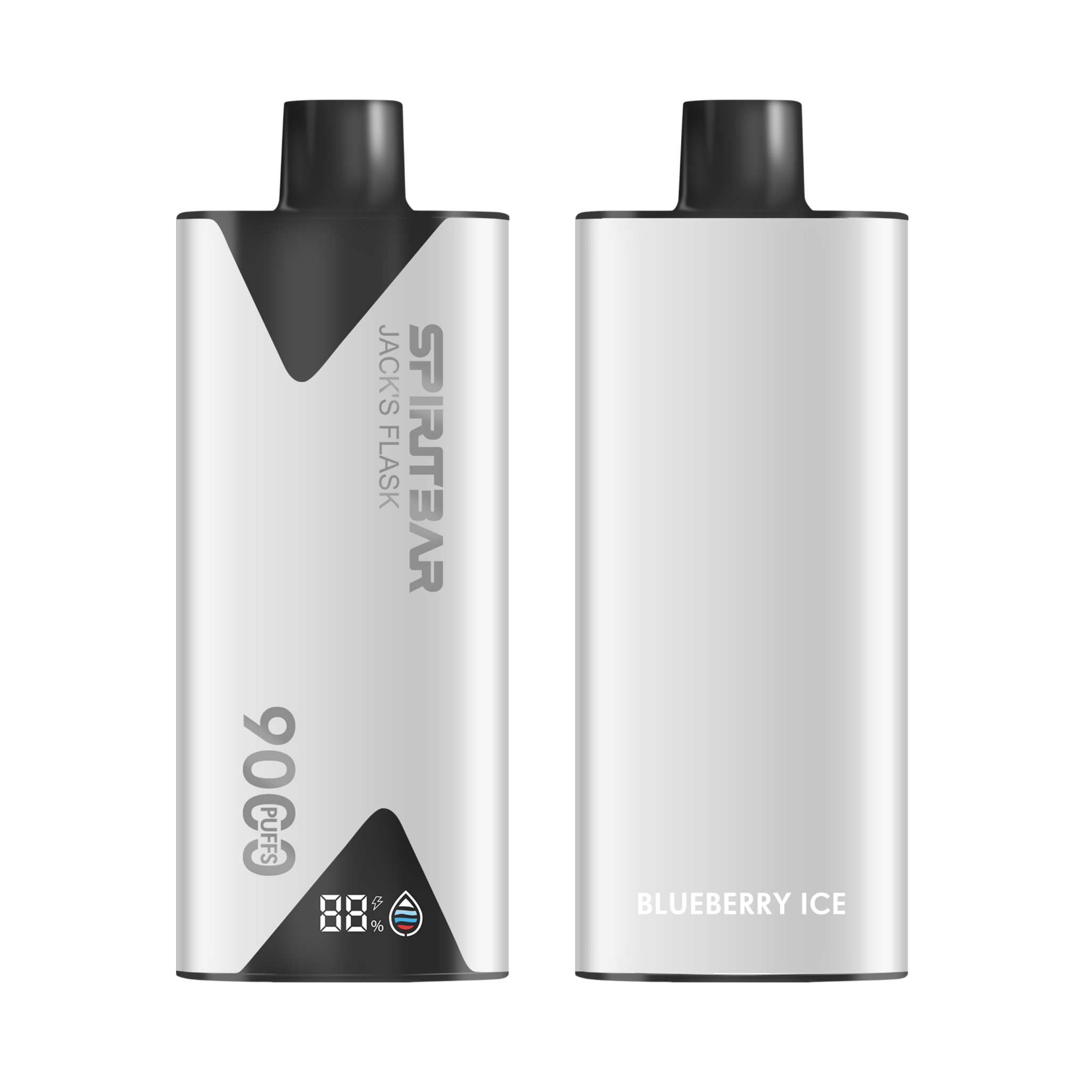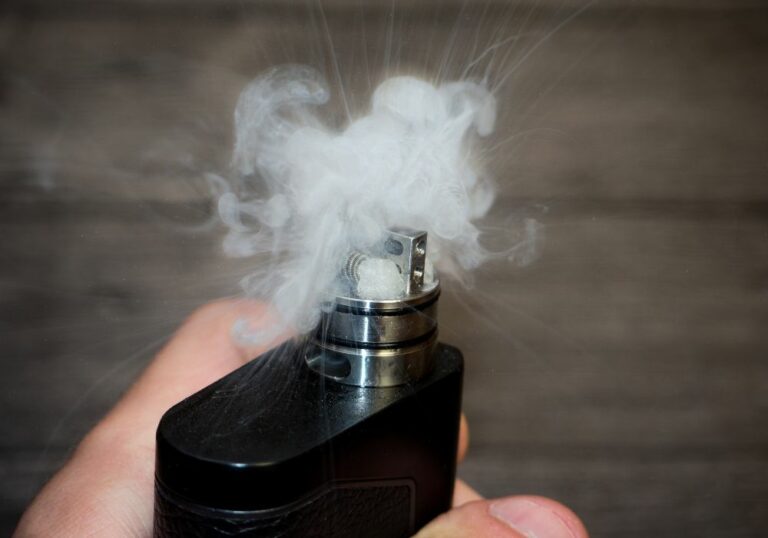Nicotine-free vapes: The ultimate placebo or the ultimate poison?
So, you’ve decided to quit smoking and are considering switching to vaping. Good for you! But now you’re wondering, are nicotine-free vapes worse for you?
Well, the good news is that vaping without nicotine is generally considered to be safer than smoking traditional cigarettes. According to Johns Hopkins Medicine, vaping eliminates many of the harmful chemicals found in cigarette smoke, which can cause cancer and other respiratory diseases. Additionally, vaping without nicotine eliminates the risk of addiction to this highly addictive substance.
However, it’s important to note that vaping, even without nicotine, can still have negative health effects. Medical News Today reports that the act of inhaling vaporized liquid can cause lung irritation and inflammation, which can lead to respiratory problems. Additionally, some vape liquids contain harmful ingredients, such as diacetyl, which has been linked to a serious lung disease called bronchiolitis obliterans. So, while vaping without nicotine may be a safer alternative to smoking, it’s still important to be aware of the potential risks.
The Fuss About Nicotine-Free Vapes
https://www.youtube.com/watch?v=0I9B_xpbrSo&embed=true
So, you’ve heard all the hype about nicotine-free vapes, but is it worth it? Let’s take a closer look at what all the fuss is about.
The Hype Train
Nicotine-free vapes have been touted as a safer alternative to smoking, but the truth is, there’s still a lot we don’t know about the long-term effects of vaping. While it’s true that vaping without nicotine can help prevent nicotine dependence and other side effects associated with nicotine, it can still cause side effects of its own.
According to Medical News Today, some of the potential side effects of vaping without nicotine include:
This disposable vape captures the daring spirit of the high seas with its flask styling and signature pirate e-juice flavors. The extraordinary battery life provides 9000 indulgent puffs for extended vaping pleasure. Live boldly and freely with the Jack's Flask - a legendary vaping experience fit for a pirate's adventures.
- Dry mouth
- Headaches
- Dizziness
- Coughing
- Irritation of the eyes and throat
While these side effects may not be as severe as those associated with nicotine use, they’re still worth considering before you jump on the nicotine-free vape bandwagon.
The Smoke and Mirrors
Another thing to consider is the fact that not all nicotine-free vapes are created equal. In fact, some “nicotine-free” vapes may actually contain addictive substances.
According to The Guardian, product testing has revealed that some so-called nicotine-free vapes actually contain high levels of stimulants. This means that even if you’re not getting your nicotine fix, you could still be putting yourself at risk for addiction.
So, while nicotine-free vapes may seem like a safer alternative to smoking, it’s important to remember that they’re not without their own risks. Before you start vaping, make sure you do your research and choose a product that’s safe and reputable.
The Science Behind Vaping
You may think that vaping is a modern invention, but the concept has been around for centuries. In ancient times, people used to heat herbs and inhale the vapors for medicinal purposes. Fast forward to the 21st century, and vaping has become a popular alternative to smoking. But what’s really going on when you take a puff from a vape?
The Anatomy of a Vape
A vape consists of a few basic components: a battery, a heating element, a mouthpiece, and a cartridge or tank to hold the e-liquid. The battery powers the heating element, which vaporizes the e-liquid. The mouthpiece is where you inhale the vapor.
But not all vapes are created equal. Some are disposable, while others are refillable. Some are small and discreet, while others are large and bulky. And some are designed to look like everyday objects, like pens or USB drives, to make them more inconspicuous.
What’s Really in That Puff?
When you vape, you’re inhaling an aerosol, or a mixture of tiny particles suspended in air. This aerosol is often called vapor, but it’s not really water vapor. Instead, it’s a mixture of chemicals, including:
- Propylene glycol and/or vegetable glycerin: These are used to create the vapor and give it a smooth texture.
- Flavorings: These can range from fruity to minty to dessert-like, and are often what make vaping appealing to users.
- Nicotine: This is the addictive substance found in tobacco products. While not all vapes contain nicotine, many do.
But what about nicotine-free vapes? Are they worse for you? While it’s true that vaping without nicotine can prevent nicotine dependence and other side effects associated with nicotine, it can still cause side effects, such as dry mouth, sore throat, and coughing. Plus, many e-cigarette users get even more nicotine than they would from a combustible tobacco product, as users can buy extra-strength cartridges or increase the e-cigarette’s voltage to get a greater hit of the substance.
This disposable vape captures the daring spirit of the high seas with its flask styling and signature pirate e-juice flavors. The extraordinary battery life provides 9000 indulgent puffs for extended vaping pleasure. Live boldly and freely with the Jack's Flask - a legendary vaping experience fit for a pirate's adventures.
So, while vaping may seem like a healthier alternative to smoking, the truth is that there are still many unknowns when it comes to the long-term health effects of e-cigarettes. It’s important to do your research and make an informed decision before picking up a vape.
Health Implications
https://www.youtube.com/watch?v=zNXmhSG0bKk&embed=true
So, you’ve decided to ditch the nicotine and go for a nicotine-free vape. But is it really safer? Let’s take a closer look at the health implications.
Is It Really Safer?
While vaping without nicotine may seem like a safer alternative to traditional smoking, it’s important to note that it’s not completely risk-free. Nicotine-free vaping can still have harmful effects on your health. According to a Healthline article, exposure to vaping liquids without nicotine can cause an inflammatory response in immune system cells, which can lead to lung damage.
Additionally, many e-cigarette users get even more nicotine than they would from a combustible tobacco product. Users can buy extra-strength cartridges, which have a higher concentration of nicotine, or increase the e-cigarette’s voltage to get a greater hit of the substance, as mentioned in a Johns Hopkins Medicine article.
The Long-Term Guesswork
When it comes to the long-term health effects of nicotine-free vaping, it’s still a guessing game. While it may be less harmful to your body overall, it also eliminates the risk of lung cancer and other respiratory diseases associated with smoking, as mentioned in a Columbia University blog post. However, the potentially harmful health effects of vaping, regardless of its nicotine content, is an issue that needs further probing.
In conclusion, while vaping without nicotine may seem like a safer alternative to smoking, it’s not completely risk-free. It’s important to weigh the potential health risks and make an informed decision.
Public Perception and Misconceptions
When it comes to vaping, there are a lot of misconceptions floating around. Many people believe that vaping is just as harmful as smoking, while others think that it’s completely harmless. The truth, as always, is somewhere in between.
The Cool Factor
One of the biggest misconceptions about vaping is that it’s cool. Many people believe that vaping makes them look edgy and rebellious, but the reality is that it just makes them look like they’re trying too hard. In fact, a recent study found that most people who vape are not doing it to look cool, but because they believe it’s a safer alternative to smoking.
The Misinformed Masses
Another common misconception about vaping is that nicotine-free vapes are worse for you than those that contain nicotine. This couldn’t be further from the truth. In fact, nicotine-free vapes are generally considered to be safer than those that contain nicotine.
However, many people are still misinformed about the risks associated with vaping. A recent study found that 49%-80% of US adults incorrectly believe that nicotine is responsible for most of the cancer caused by smoking. Another study found that more than 60% of young adults believe that nicotine causes cancer.
The truth is that while nicotine is addictive, it’s not the main cause of the health risks associated with smoking. The real danger comes from the tar and other chemicals found in cigarettes. Vaping, on the other hand, doesn’t produce tar and other harmful chemicals, making it a safer alternative to smoking.
In conclusion, it’s important to separate fact from fiction when it comes to vaping. While there are still some risks associated with vaping, it’s generally considered to be a safer alternative to smoking. And if you’re worried about the cool factor, just remember that trying too hard is never cool.
Regulations and Their Impact
If you’re wondering whether nicotine-free vapes are worse for you, you might also be wondering about the regulations surrounding these products. Here’s what you need to know:
The Law’s Take
In the United States, the Food and Drug Administration (FDA) regulates e-cigarettes, including nicotine-free vapes. In 2016, the FDA extended its authority to include all tobacco products, including e-cigarettes. This means that manufacturers of e-cigarettes must comply with certain regulations, such as submitting their products for FDA approval and including warning labels on their packaging.
However, the FDA’s regulations have faced criticism for being too lenient. For example, the regulations do not place any limits on the amount of nicotine that can be included in e-cigarettes. Additionally, some critics argue that the regulations do not go far enough in protecting young people from the dangers of e-cigarettes.
The Loopholes
Despite the FDA’s regulations, there are still some loopholes that allow manufacturers to sell nicotine-free vapes without facing the same level of scrutiny as other tobacco products. For example, some manufacturers have marketed their products as “herbal” or “natural” remedies, which allows them to avoid certain regulations.
Another loophole involves the fact that the FDA’s regulations only apply to e-cigarettes that are marketed for therapeutic purposes. This means that manufacturers can sell e-cigarettes as “recreational” products without having to comply with the same regulations.
Overall, while the FDA has taken steps to regulate e-cigarettes, including nicotine-free vapes, there are still some loopholes that manufacturers can exploit. As a consumer, it’s important to be aware of these loopholes and to do your research before purchasing any e-cigarette products.


